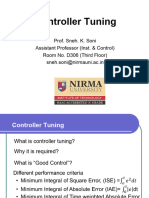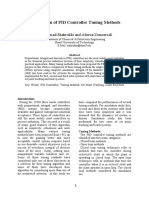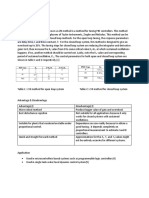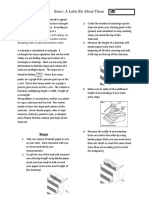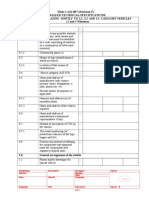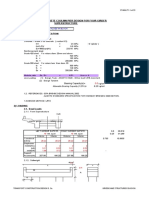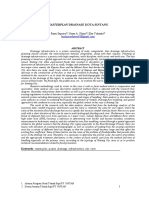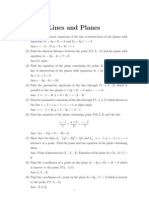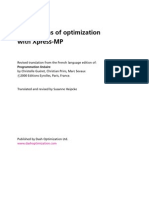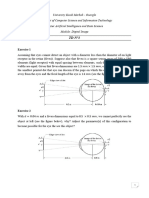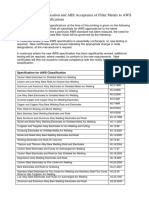0% found this document useful (0 votes)
34 views18 pagesController Tuning Methods
The document discusses controller tuning methods, specifically Ziegler-Nichols and Cohen-Coon, which are used to optimize control system performance. Ziegler-Nichols is a simpler method that may lead to oscillatory behavior, while Cohen-Coon is more advanced and better suited for systems with dead time but requires more analysis. A comparison of the two methods highlights their advantages and limitations in terms of ease of use, system oscillation, dead time handling, and applications.
Uploaded by
RamCopyright
© © All Rights Reserved
We take content rights seriously. If you suspect this is your content, claim it here.
Available Formats
Download as PDF, TXT or read online on Scribd
0% found this document useful (0 votes)
34 views18 pagesController Tuning Methods
The document discusses controller tuning methods, specifically Ziegler-Nichols and Cohen-Coon, which are used to optimize control system performance. Ziegler-Nichols is a simpler method that may lead to oscillatory behavior, while Cohen-Coon is more advanced and better suited for systems with dead time but requires more analysis. A comparison of the two methods highlights their advantages and limitations in terms of ease of use, system oscillation, dead time handling, and applications.
Uploaded by
RamCopyright
© © All Rights Reserved
We take content rights seriously. If you suspect this is your content, claim it here.
Available Formats
Download as PDF, TXT or read online on Scribd
/ 18








